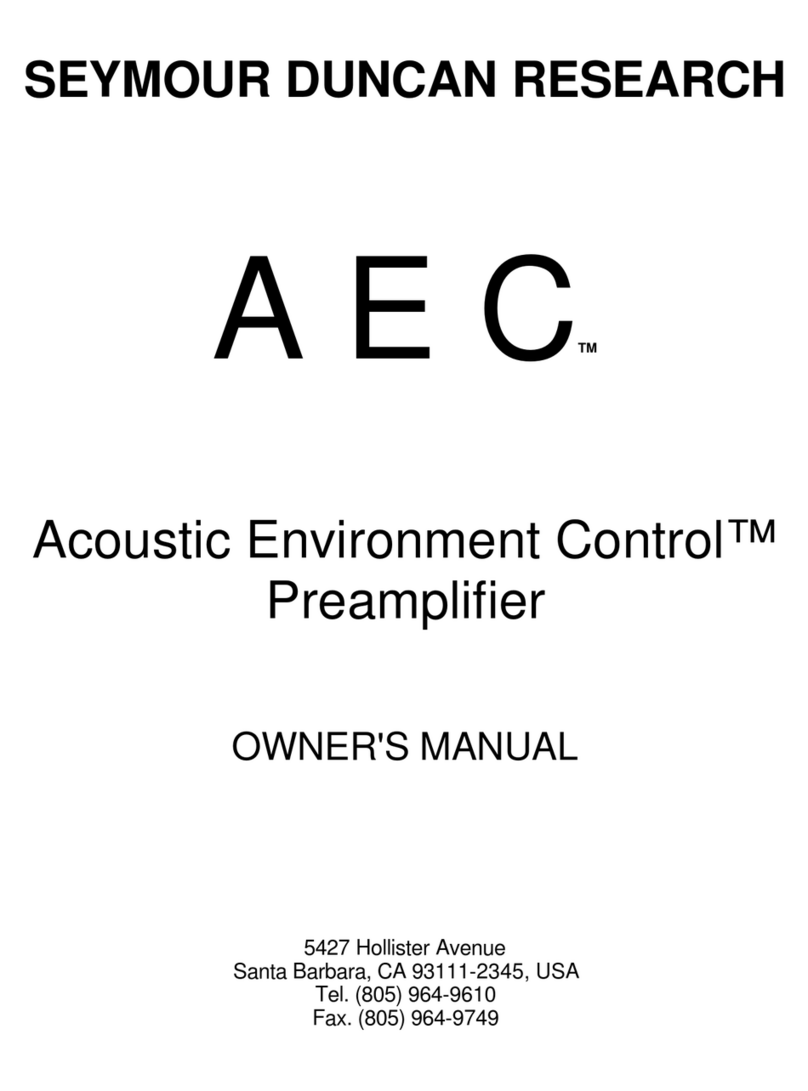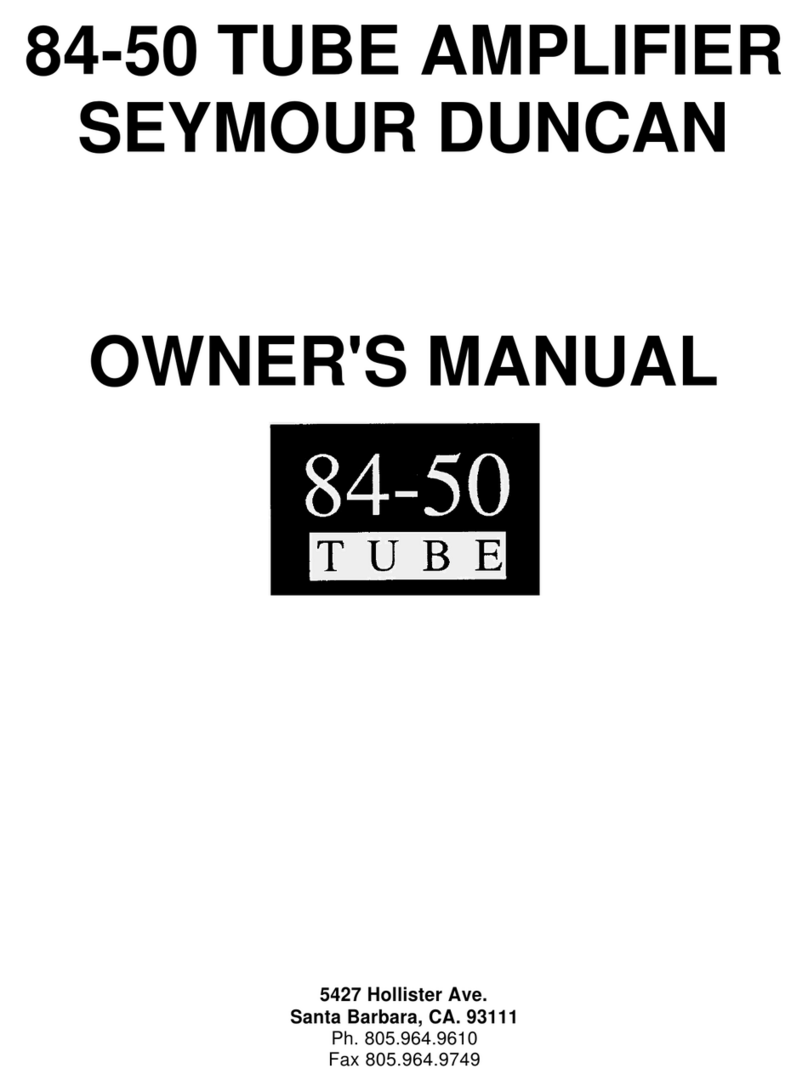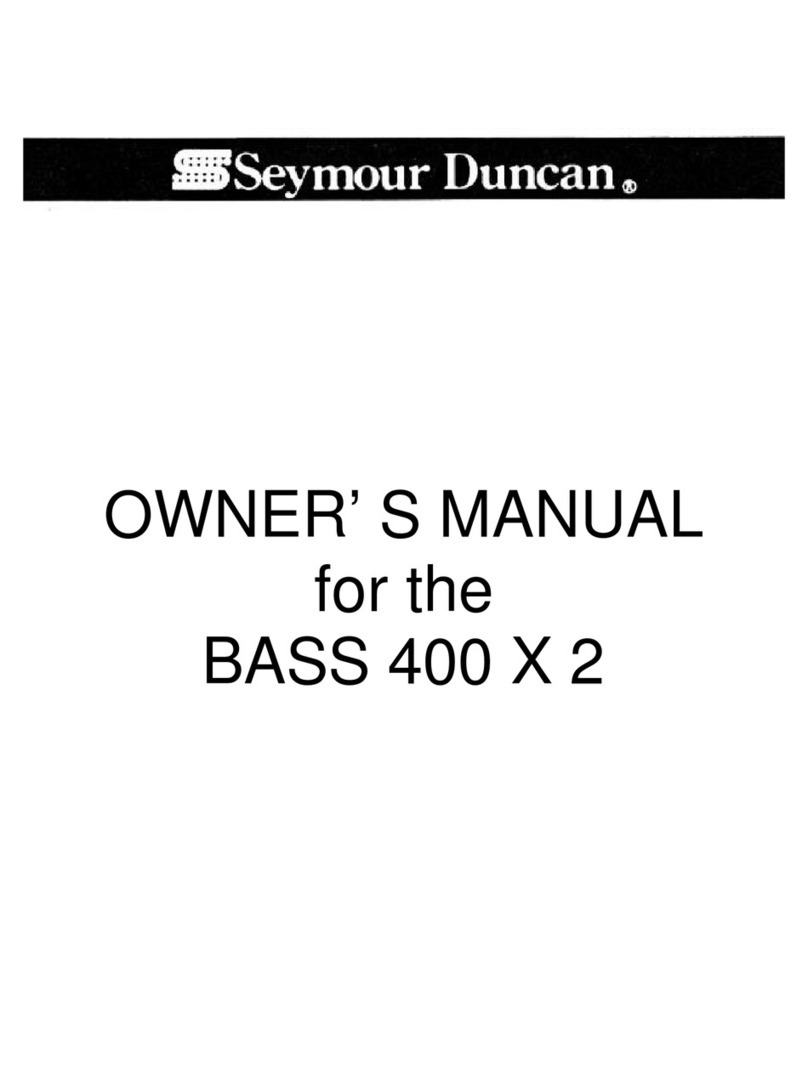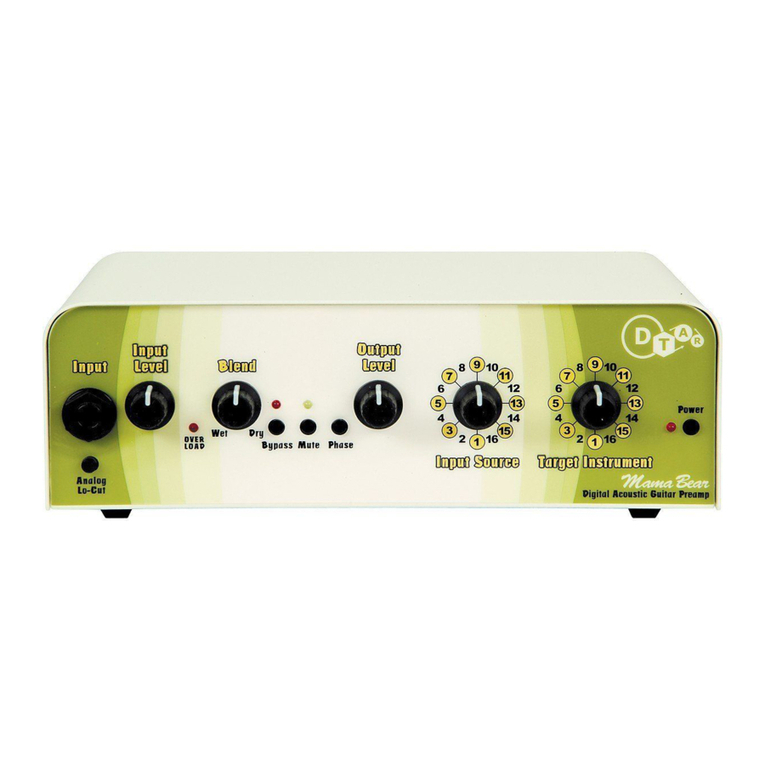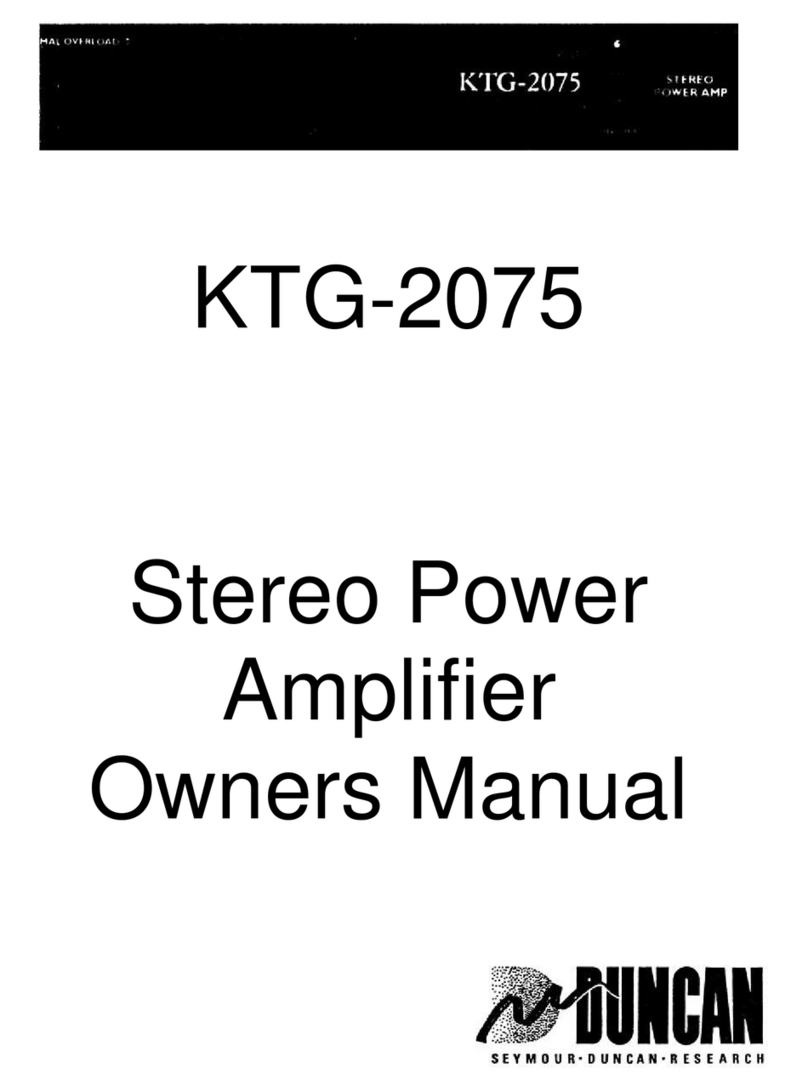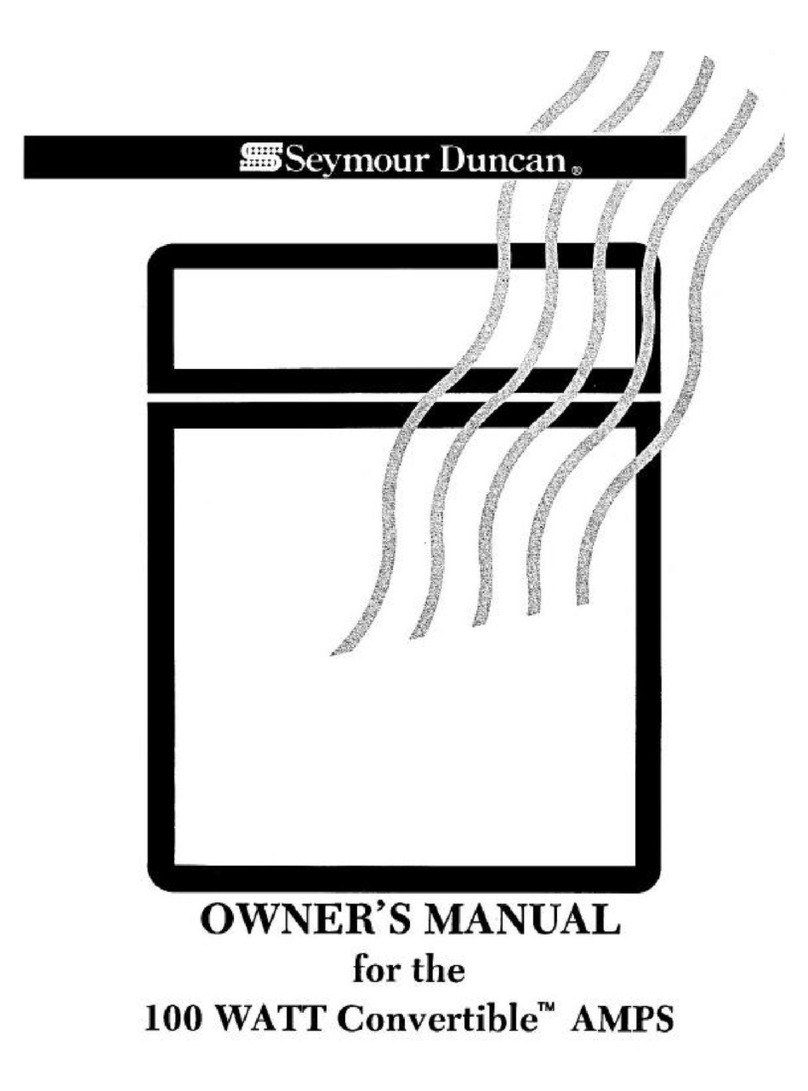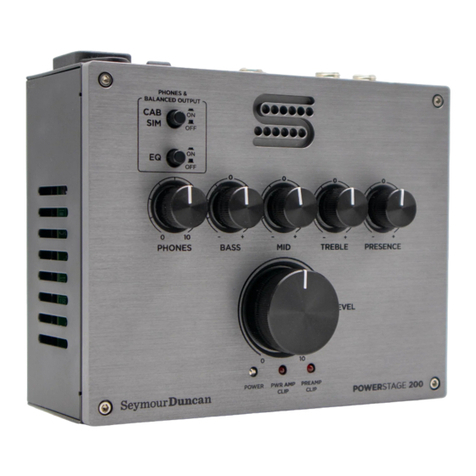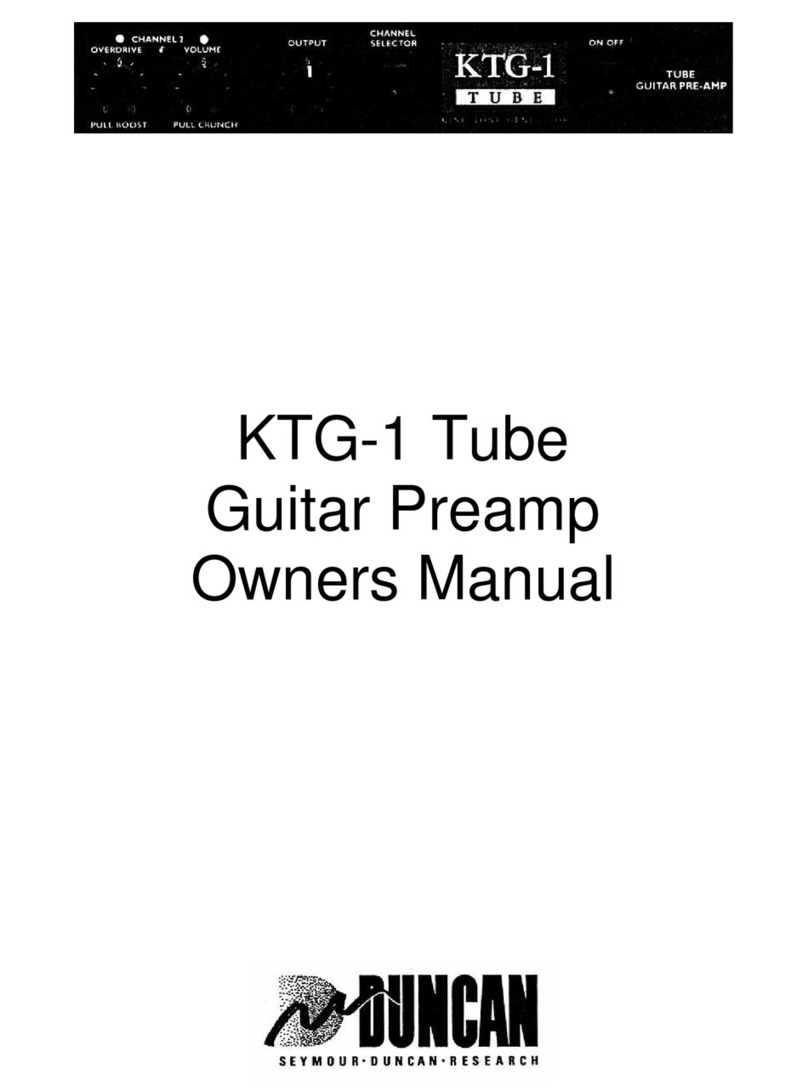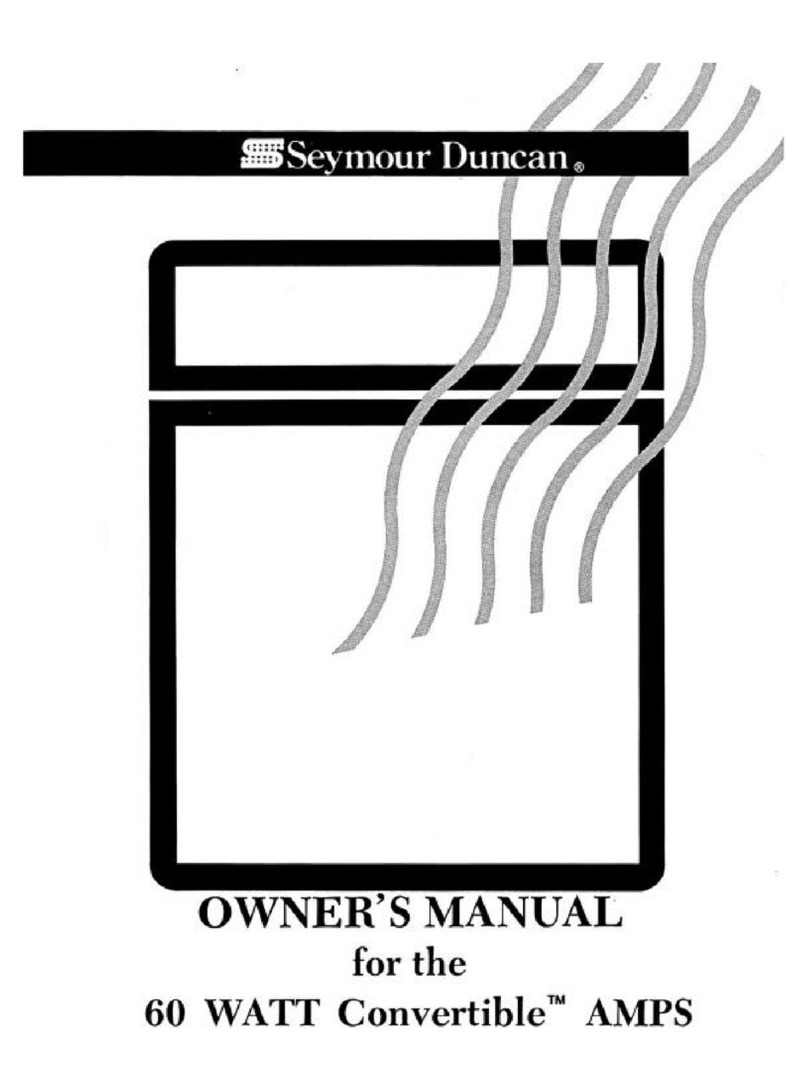
MAINTENANCE
Most maintenance procedures for your amp will involve the tubes. Refer any other necessary
work or adjustments to a qualified technician. THERE ARE NO USER SERVICEABLE PARTS
INSIDE. If your amp requires service, contact the Seymour Duncan factory for the name of your
nearest Authorized Service Center. PLEASE NOTE: WE CANNOT ACCEPT UNITS SHIPPED
TO THE FACTORY WITHOUT A RETURN AUTHORIZATION NUMBER.
The 12AX7 preamp tubes should last up to 2-3 years, depending on the amount of use.
Symptoms, which indicate failing pre-amp tubes, include:
-Any intermittent noise (sputtering, ringing, etc.) that seems to come and go as the amp warms
up.
-Excessive white noise or hiss.
-Inability to get a clean sound, even a low volume levels.
The EL-84 tubes in the power section of the amp could last up to 2 years, depending on volume
levels and hours of use. High volume playing 3-4 hours a day, 5-6 days a week could wear out a
set of output tubes in a little as 6 months.
Symptoms, which indicate worn power tubes, include:
-Loss of power, punch; amp sounds "mushy" when pushed.
-Excessive hum.
If the outer plates of a tube begin to glow brightly, this tube has shorted. Turn off the amp and
replace the tubes, preferably with a matched set. It's OK in an emergency to replace only one
output tube, but all four output tubes should be replaced ASAP with a matched set. These are
tubes, which have been tested and matched according to their power and performance
characteristics (ex. RAM labs tubes, Groove Tubes, etc.). A matched set of power tubes will
significantly lower audible hum and increase power output (possibly as much as 10-20 watts).
This will offer more clarity on the clean channel and a tighter low-end response for a punchier
overdrive sound. Also, when replacing the output tubes on your amp, it is good to have the amp's
bias control adjusted to achieve the optimum performance from a set of tubes. ALWAYS REFER
THE AMP TO A QUALIFIED TECHNICIAN FOR BIAS ADJUSTMENT.
Always store your amp in a dry area. Storage in damp areas will cause corrosion of internal
electrical contacts (switches, pots, jacks, etc.) and will in time degrade the performance of the
amp. Amps used in damp environments should be periodically cleaned by a qualified technician.
Symptoms, which may indicate corrosion, include:
-Potentiometer rotational noise (volume or tone controls sound "scratchy" when turning). Use of a
commercially available tuner spray will work in most cases.
-Intermittent or noisy jacks.
-Intermittent tube noise that is affected by slightly wiggling the tube in its socket.
To maintain the tolex covering on your amp, use "armor-all" type cleaner.

